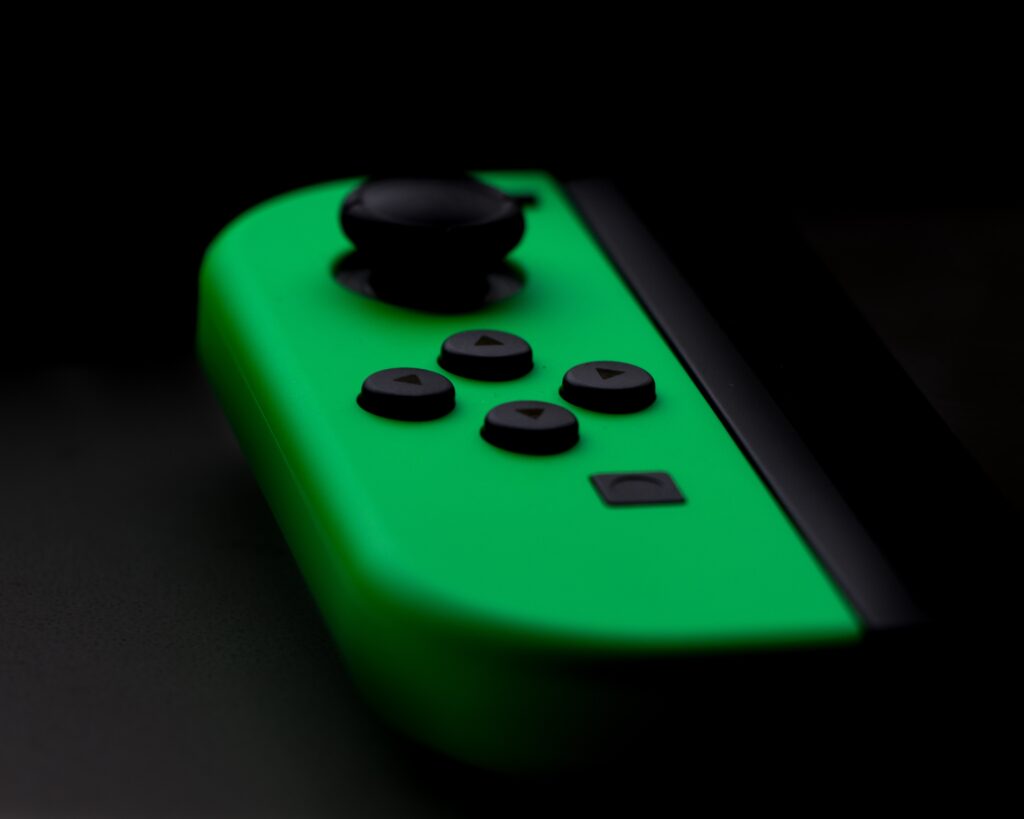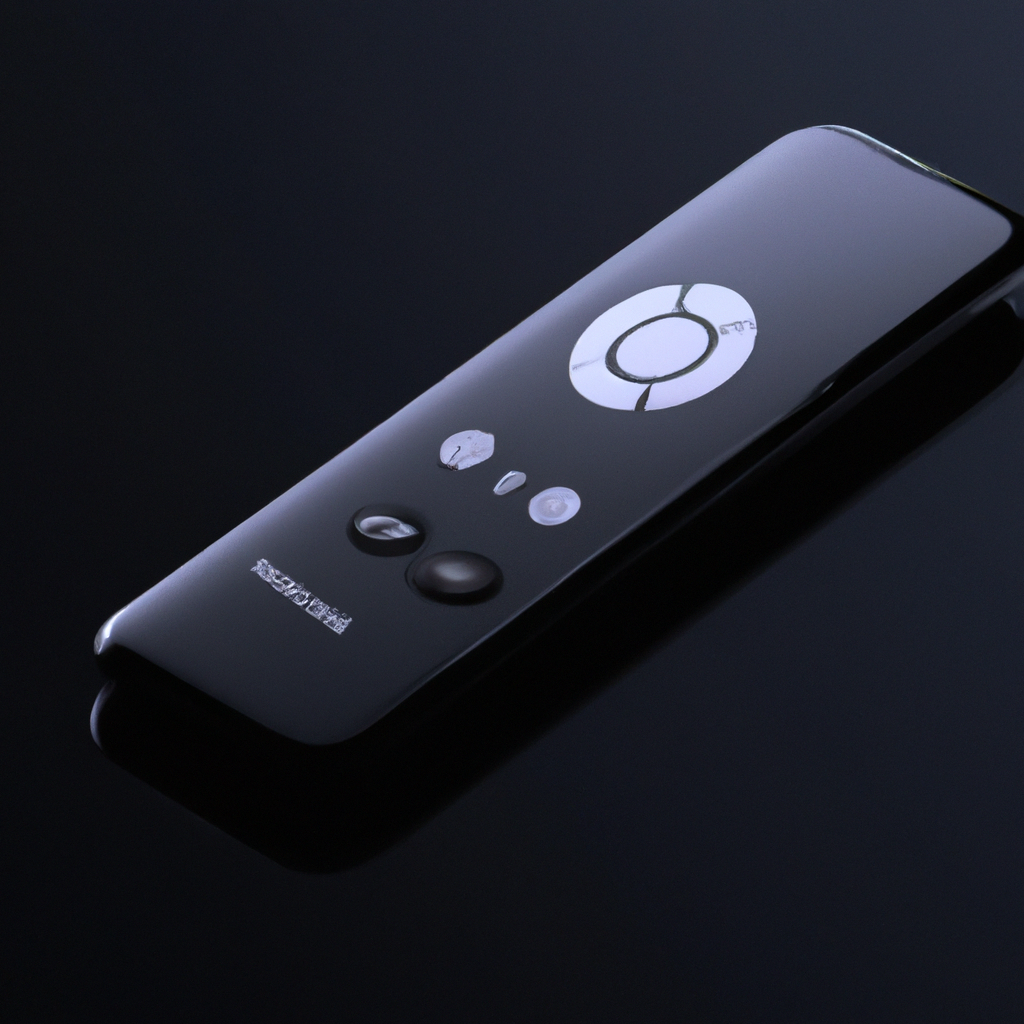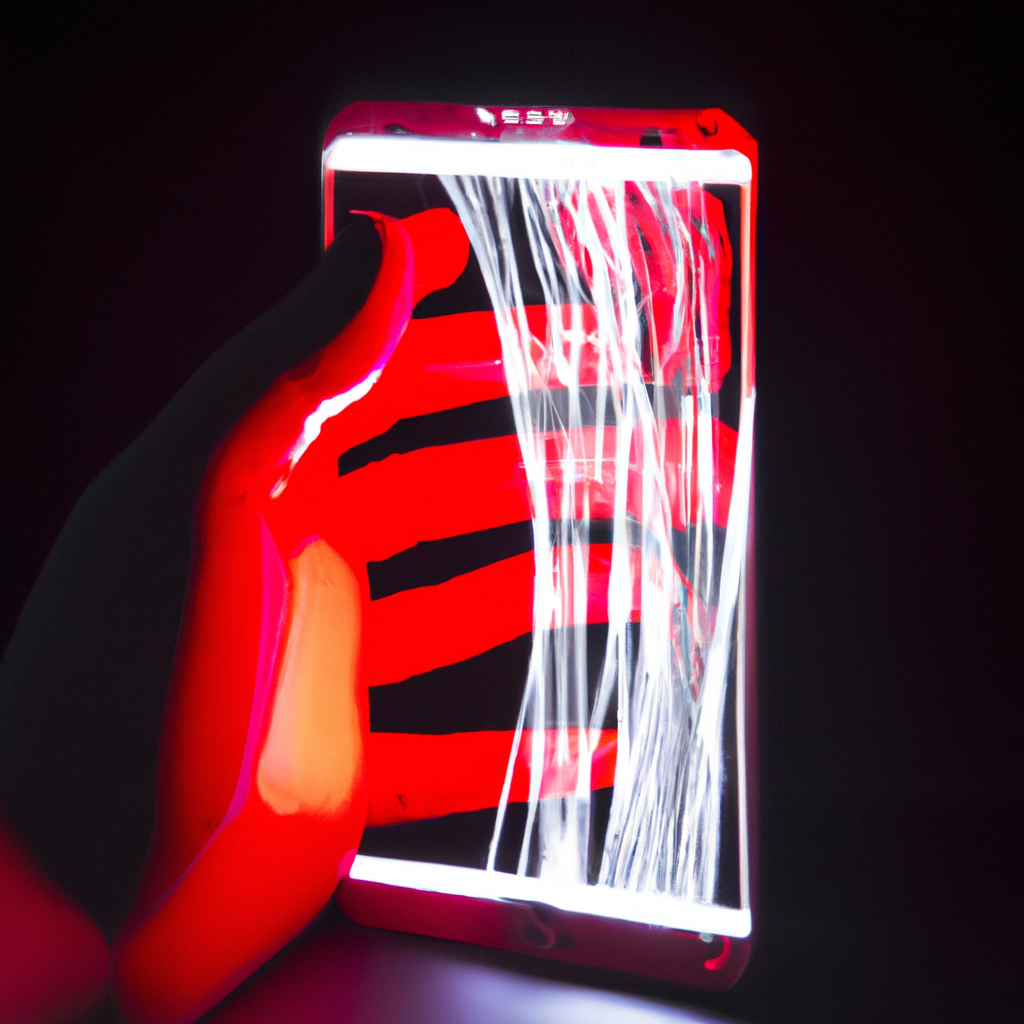Imagine being able to control the brightness and color of your smart lights from anywhere in your home, or even when you’re away. It sounds like a dream, but with the advancements in technology, this is now a reality. You no longer have to worry about getting up from your cozy spot on the couch to adjust the lighting in your room. With just a few taps on your smartphone, you can easily dim the lights for a relaxing ambience or choose vibrant colors to set the mood for a party. The convenience and flexibility of remotely controlling your smart lights is truly remarkable, giving you the power to transform your living space with just a touch of a button.
Overview
Smart lights have revolutionized the way we illuminate our homes, and one of the most exciting features they offer is the ability to control the brightness and color from anywhere in your house. This article will explore the importance of remote control functionality for smart lights and highlight the numerous benefits it provides. From adjusting brightness levels to creating personalized color-changing effects, we will delve into how controlling smart lights remotely can enhance your lifestyle and convenience.
Introduction
Gone are the days of struggling with traditional light switches. With the advent of smart lights, you can now control your lighting with just a few taps on your smartphone or a simple voice command to a virtual assistant. Remote control has become an indispensable feature for smart light users, offering unparalleled convenience and flexibility. Whether you’re at home or away, being able to control the brightness and color of your lights remotely adds a whole new level of customization and convenience to your lighting experience.

Importance of Remote Control
Remote control functionality is a crucial aspect of smart lights for several reasons. Firstly, it allows you to adjust the lighting according to your mood, activity, or time of day without physically accessing the light switch. This level of convenience is especially beneficial for those with limited mobility or who may find it challenging to reach the light switches. Secondly, remote control eliminates the need for multiple switches and dimmers in a room, as you can control all the lights together or individually from a single device. Lastly, it enhances home security by allowing you to create the illusion of occupancy when you’re away by remotely turning on and off the lights.
Benefits of Controlling Brightness and Color Remotely
Controlling the brightness and color remotely offers a myriad of benefits that contribute to a personalized and immersive lighting experience. By adjusting the brightness, you can easily create the perfect lighting atmosphere for different activities such as relaxing, reading, or hosting a party. It also enables you to save energy by dimming the lights when bright illumination is not necessary. The ability to control the color remotely is another exciting feature that allows you to customize your lighting to match your preferences or create dynamic effects. Whether you want to set a calming blue hue for a cozy evening or a vibrant rainbow for a lively gathering, remote control makes it effortless to transform your space.

Controlling Smart Lights Remotely
There are various methods to control smart lights remotely, each offering its own unique advantages. Let’s explore the most popular options:
Through Smartphone Apps
Smartphone apps provided by smart lighting manufacturers are the most common way to control your lights remotely. These apps typically connect to your smart lights using Wi-Fi or Bluetooth and offer a user-friendly interface to adjust brightness and color, create schedules, and even sync with other smart devices. With just a few taps on your phone, you can completely transform your lighting setup from anywhere in your home.
Using Voice Commands with Virtual Assistants
Virtual assistants like Amazon Alexa, Google Assistant, or Apple Siri have become an integral part of smart homes. By linking your smart lights to these virtual assistants, you can control them remotely through voice commands. Simply say phrases like “Hey Google, dim the lights in the living room to 50%,” and watch as your lights respond accordingly. This hands-free approach to controlling brightness and color adds an extra layer of convenience, especially when your hands are full or you’re in another part of your house.
Using Smart Home Hubs
If you have a more extensive smart home setup, a smart home hub can serve as a central control center for all your connected devices, including smart lights. Smart home hubs like Samsung SmartThings or Apple HomePod allow you to control your lights remotely through their respective apps. These hubs often support various smart protocols, ensuring compatibility with a wide range of smart light brands and models.
Remote Control Using Remote Controls
Although smartphone apps and virtual assistants have become the preferred methods of controlling smart lights remotely, some manufacturers also include physical remote controls in their smart lighting packages. These compact yet intuitive devices let you adjust brightness, change colors, and even activate pre-set scenes without the need for a smartphone or voice command. They are particularly useful for households where multiple people may need to control the lights and for those who prefer the tactile experience of pressing physical buttons.
Compatibility Requirements
To take advantage of remote control functionality, it’s essential to ensure compatibility between your smart lights and the devices you intend to use for control. Here are the main compatibility requirements you should consider:
Smart Light Brands and Models
Different smart light brands and models may have their own specific app compatibility. Before purchasing smart lights, make sure the manufacturer’s app is compatible with your smartphone’s operating system.
Smartphone Operating Systems
Smartphone apps for controlling smart lights are typically designed for specific operating systems, such as iOS or Android. Ensure your smartphone is running an operating system that is compatible with the manufacturer’s app. This ensures a seamless integration and a smooth remote control experience.
Virtual Assistants and Smart Home Hubs
If you plan to use virtual assistants or smart home hubs for remote control, verify that your chosen smart lights are compatible with the virtual assistant or smart home hub you already have or intend to purchase. Different virtual assistants and smart home hubs support various smart protocols, so it’s important to do your research to ensure a seamless integration.
Wi-Fi or Bluetooth Connectivity
Most remote control methods rely on Wi-Fi or Bluetooth connectivity to communicate with your smart lights. Ensure that your smart lights support the appropriate connectivity method, and that your home network has adequate coverage for reliable remote control.

Controlling Brightness Remotely
Adjusting the brightness of smart lights remotely brings a whole new level of convenience and customization to your lighting experience. Here are some key aspects to consider when controlling brightness remotely:
Adjusting Brightness Levels
Whether you want a soft, ambient glow or a bright, well-lit room, remotely adjusting the brightness levels of your smart lights allows you to create the perfect lighting atmosphere for any occasion. Most smart lighting apps offer a simple slider or numerical input to control brightness, giving you full control over the illumination in your space.
Setting Up Schedules
One of the standout features of smart lights is the ability to set up schedules. With remote control, you can easily configure your lights to automatically dim or brighten at specific times of the day. This is not only convenient but also helps save energy by ensuring you never accidentally leave the lights on when they’re not needed.
Creating Scenes
Scenes are pre-configured lighting setups that you can activate with a single command or tap. Remote control enables you to create scenes for different activities or moods, such as “Movie Night” or “Reading Time,” which adjust the brightness of multiple lights simultaneously. With just one touch of your smartphone screen or a voice command, you can instantly transform your lighting to suit the desired ambiance.
Syncing with Other Smart Devices
Controlling brightness remotely opens up possibilities for seamless integration with other smart devices in your home. You can link your smart lights with motion sensors, so they automatically turn on as you enter a room. You can also sync your lights with smart speakers or multimedia devices, creating an immersive lighting experience that responds to the media you’re enjoying – whether it’s pulsating lights that sync with your favorite song or a color-changing backdrop for your movie night.
Controlling Color Remotely
Beyond controlling brightness, one of the most exciting features of smart lights is the ability to change colors. Remotely controlling the color of your lights allows for endless possibilities in personalization and creativity. Here’s what you need to know about controlling color remotely:
Changing Color Options
Smart lights offer a vast range of color options for you to choose from. By using your smartphone app or virtual assistant, you can easily select your desired color from a color wheel or presets. Whether you prefer warm, cool, or vibrant colors, the option to change colors remotely allows you to set the perfect tone for any occasion.
Personalizing Color Preferences
Controlling color remotely enables you to customize your lighting to match your personal preferences or aesthetics. Create a calming and peaceful atmosphere with soft pastels, or bring vibrancy and energy to a space with bold, saturated colors. The choice is yours, and by controlling color remotely, you can adapt your lighting to suit your current mood or style effortlessly.
Creating Color-Changing Effects
One of the most exciting capabilities of smart lights is the ability to create dynamic color-changing effects. Remote control allows you to create stunning light shows right in your own home. Whether it’s a gentle transition through a spectrum of colors or a pulsating disco mode, the ability to change colors remotely lets you unleash your creativity and transform your room into a visual spectacle.
Syncing with Multimedia Content
Want your lights to dance to the beat of your favorite song or mimic the colors on your TV screen? Remote control functionality allows you to sync your lights with multimedia content. Many smart lighting systems offer integration with popular music streaming platforms or have built-in features that sync with your TV’s content, enhancing your viewing or listening experience with a synchronized visual element.

Troubleshooting and Tips
While smart lights provide exceptional convenience and customization, there may be occasional troubleshooting or optimization needed for optimal performance. Here are some common troubleshooting tips and recommendations:
Connection Issues
If you experience connectivity issues between your smart lights and your control device, such as a smartphone or smart home hub, check your Wi-Fi or Bluetooth signal strength. Ensure that both your smart lights and your control device are connected to the same network, and avoid physical obstructions or interference that may degrade the signal. If you continue to experience connection problems, consult the manufacturer’s support resources for further assistance.
Resetting Smart Lights
If your smart lights are not responding or behaving as expected, resetting them may help resolve the issue. Each smart light brand may have specific instructions for resetting their products, so consult the user manual or the manufacturer’s support website for guidance. Resetting your smart lights can often restore them to their default settings and help troubleshoot any connectivity or performance issues.
Optimizing Wi-Fi or Bluetooth Signals
To ensure a stable and reliable connection between your smart lights and control device, it’s crucial to optimize your Wi-Fi or Bluetooth signals. Consider positioning your Wi-Fi router in a central location within your home to minimize signal drop-off. Additionally, reducing interference from other devices, such as microwave ovens or cordless phones, can also improve signal strength. For Bluetooth connectivity, ensure that your control device is within the recommended range of your smart lights for a smooth remote control experience.
Smart Lighting Automation
To further enhance the convenience of remote control, consider automating your smart lights through routines or triggers. Many smart lighting systems allow you to create rules and automation sequences, such as turning on the lights when you arrive home or dimming them automatically at bedtime. By setting up these automations, you can streamline your lighting experience and eliminate the need for manual control altogether.
Security Considerations
As with any connected device, it’s important to prioritize security when controlling smart lights remotely. Here are some key security considerations for your smart lighting setup:
Securing Smart Light Controls
Always ensure that your smart light controls, whether they are smartphone apps or virtual assistants, are password-protected. Set up strong, unique passwords or enable biometric authentication, such as fingerprint or facial recognition, to add an extra layer of security to your remote control functionality. Regularly review and update your passwords to minimize the risk of unauthorized access to your smart lights.
Protecting Personal Information
When using smartphone apps or virtual assistants for remote control, be mindful of the personal information you share. Smart lighting manufacturers may collect certain data, such as your usage patterns or device information, to improve their products and services. Familiarize yourself with the manufacturer’s privacy policy and ensure the data being collected is in line with your comfort level. If you have concerns about data privacy, consider using smart lights with a strong commitment to privacy and data protection.
Ensuring Firmware or Software Updates
Regularly updating the firmware or software of your smart lights is vital to keep them secure and up-to-date. Manufacturers often release updates that address security vulnerabilities or introduce new features. Stay vigilant about checking for updates and ensure that you install them promptly to safeguard your smart lights from potential security risks.
Choosing a Secure Network
When setting up your smart lights and control devices, it’s crucial to secure your home network. Ensure that your Wi-Fi network is password-protected with a strong password, and consider enabling network encryption, such as WPA2, for added security. Avoid using public Wi-Fi networks or unsecured networks that may compromise the security of your smart lights and control devices.

Conclusion
Controlling the brightness and color of your smart lights remotely offers unmatched convenience, customization, and creativity. Whether through smartphone apps, voice commands with virtual assistants, smart home hubs, or dedicated remote controls, remote control functionality allows you to transform your lighting from anywhere in your home. By adjusting brightness levels, setting up schedules, creating personalized scenes, and even syncing with multimedia content, you can truly enhance your lifestyle and elevate your lighting experience. With a focus on compatibility, troubleshooting, and security considerations, the possibilities and benefits of remote control for smart lights are extensive. Embrace the future of lighting technology and discover the endless possibilities of controlling your lights remotely.










